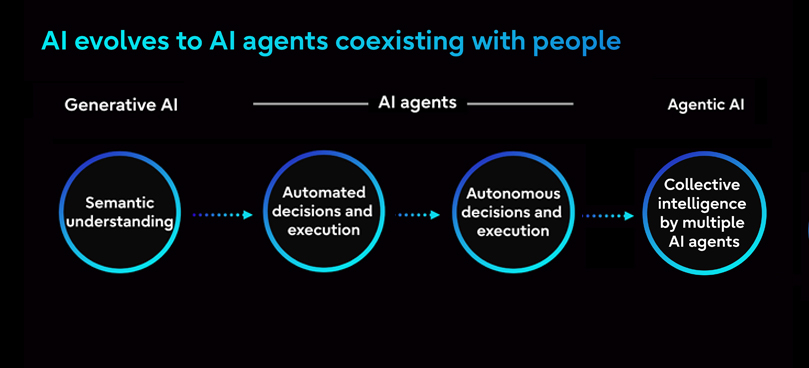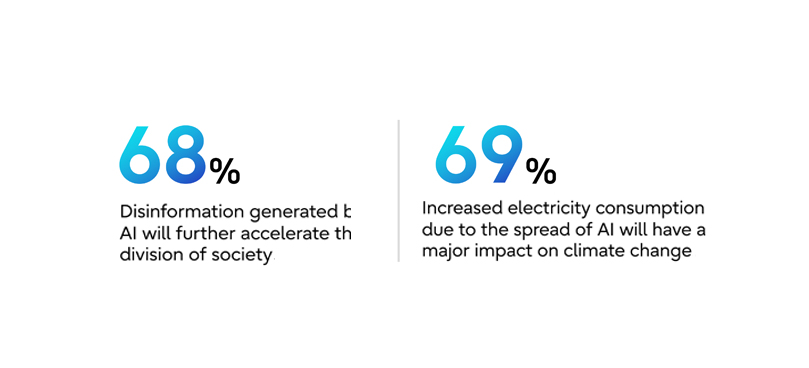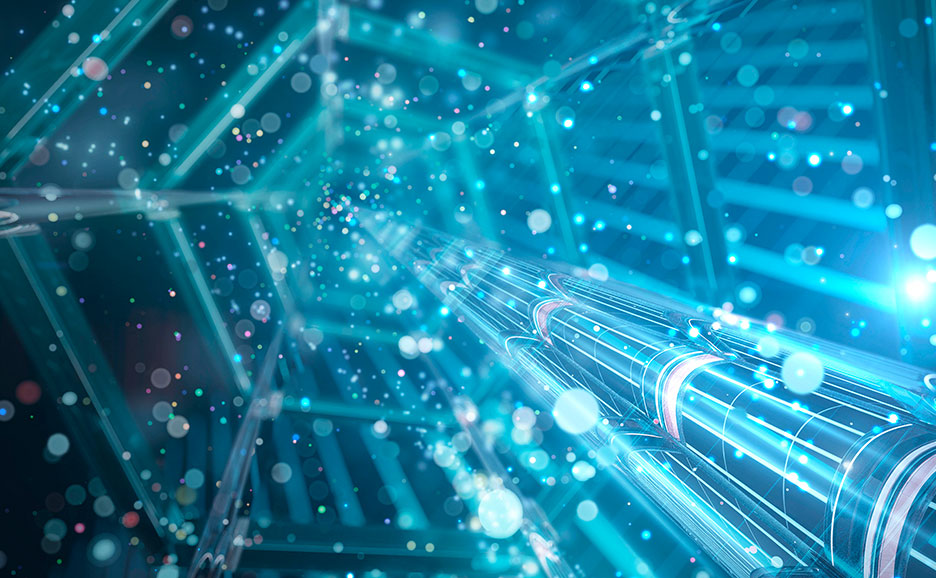Fujitsu Technology and Service Vision 2025 (PartII) Working with agentic AI and its potential risks

Article | 2025-9-1
4 minute read
The world will truly understand the value of artificial intelligence once autonomous ‘agentic AI’ becomes part of our everyday lives — that’s how Fujitsu describes it in the Fujitsu Technology and Service Vision 2025.
In this article, we explore the future of work, where humans and AI agents collaborate to enhance human creativity. We also highlight the potential risks of AI, including growing social disparities and rising energy demands.
How we work with AI agents
To illustrate how the future can leverage collaboration between people and AI, let's explore a scenario from Fujitsu's Technology Vision. This vision, presented through the experiences of characters at an AI-powered company, illustrates how evolving technology could transform the way people work.
Our scenario is set in the near future at the imaginary company Biomaterial. It follows Lee, who oversees a project to develop new clothing materials, supported by his AI assistant, Nova. We see Lee utilizing Nova for tasks such as patent research and document preparation.
“AI remains a tool we use — but it’s becoming a far more powerful and accessible one,” says Hiroshi Nishikawa, Senior Director of the Technology Marketing Strategy Division at Fujitsu.
“In FT&SV 2025, we imagine a society where AI becomes more than just a tool — it’s a trusted partner, almost like ‘Another Me.’”
Competition is intensifying in the development of agentic AI, and Fujitsu is one of the companies leading the way.
Fujitsu has released AI agents that include one designed to autonomously support meeting discussions by suggesting relevant information based on the conversation. Another is a legal support agent that analyzes legal documents, builds databases, and highlights potential risks.
Nishikawa pointed out that not many AI agents can operate autonomously. “However, in the not-too-distant future, AI will be able to assess information and provide suggestions whenever instructed. Furthermore, we believe that AI will start connecting with other AIs, enabling them to take over some of our tasks.”
He says such change will allow humans to focus on creative work. “We created the story of Lee and Nova to show readers how drastically our work style will change,” says Nishikawa.
*1)Agentic AI: A system that can make autonomous decisions or conduct tasks and workflows using AI technology, including large language models, reasoning models and machine learning.

Negative impact of AI evolution
However, it is evident that many people still have deep-rooted concerns about the rapid evolution of AI.
As part of FT&SV 2025, Fujitsu conducted a survey of 800 business executives in 15 countries in February 2025. (*2) Sixty-eight percent of executives said that “AI-generated misinformation and bias will accelerate social division.” Sixty-nine percent expressed concern that the spread of AI would increase electricity consumption and negatively impact climate change.
“This high level of interest in AI is driven by a strong sense of urgency, as people worry about job losses or the disappearance of existing businesses,” explains Nishikawa. “In FT&SV 2025, we felt it was important — as a technology company — to emphasize that AI doesn’t only promise a bright future. We therefore took care to clearly illustrate its potential downsides alongside its benefits.”
*2) US research firm Frost & Sullivan conducted the survey on behalf of Fujitsu

The International Energy Agency estimates the amount of electricity consumed by data centers used by AI could increase tenfold if AI were fully integrated into search engines such as Google. (*3)
This is based on the assumption that ChatGPT from OpenAI consumes 2.9 Wh of electricity per request and that 9 billion requests are generated daily.
Compared to the average power consumption of a Google search (0.3 Wh), this would require roughly 10 TWh of additional electricity per year.
Tackle the risks, new opportunities
“Developing high-performance, low-power consumption products will become even more important,” says Nishikawa. He also noted that tackling new societal challenges can open up valuable market opportunities.
“Fujitsu is committed to advancing technologies such as low-power CPUs and improved GPU efficiency. We hope readers will understand our efforts to address the risks of emerging technologies — and feel more reassured and confident in using AI.”

Shifting to a more optimistic outlook, Lee's story continues, showcasing how people and AI in a collaborative ecosystem deliver significant benefits and drive positive outcomes.
In this future story, Lee and colleagues are working to develop biomass materials made from plants. This requires building an ecosystem that includes systems for growing and recycling plant-based resources.
Thanks to AI agents, farmers, logistics providers, energy companies, research institutions and other organizations across industries can participate in this ecosystem — sharing data and AI capabilities with one another.
Shifting to a more optimistic outlook, Lee's story continues, showcasing how people and AI in a collaborative ecosystem deliver significant benefits and drive positive outcomes.
In this future story, Lee and colleagues are working to develop biomass materials made from plants. This requires building an ecosystem that includes systems for growing and recycling plant-based resources.
Thanks to AI agents, farmers, logistics providers, energy companies, research institutions, and other organizations across industries can participate in this ecosystem — sharing data and AI capabilities with one another.
Nishikawa says that Fujitsu’s core message in the story remains unchanged: technology can help create a more prosperous future.
“We hope FT&SV 2025 will inspire people to take action toward achieving their company’s purpose and goals,” he adds.
The Fujitsu Technology and Service Vision outlines our vision for a Net Positive future and how technology can advance society.
Please download Fujitsu Technology and Service Vision 2025 to find out more.
*3) International Energy Agency. “Electricity 2024: Analysis and forecast to 2026”. Revised version, January and May 2024. https://iea.blob.core.windows.net/assets/18f3ed24-4b26-4c83-a3d2-8a1be51c8cc8/Electricity2024-Analysisandforecastto2026.pdf.
Hiroshi Nishikawa
Fujitsu Limited
Senior Director,
Technology Marketing Strategy Div.,
Technology Strategy Unit
Prior to leading Fujitsu Technology and Service Vision since 2014, Hiroshi Nishikawa's career at Fujitsu encompassed telecommunications equipment development, global alliances for server products, and M&A activities in Europe. He holds an MBA from the Stephen M. Ross School of Business and a master's degree in physics from Osaka University Graduate School of Science.


Related Information
People and AI: Fujitsu's vision for the future of business

Business transformation in the age of AI

Addressing AI's Power Consumption Challenges Fujitsu's Three Energy-Saving Technologies

A Future Strategy Powered by AI and Net Positive Thinking

